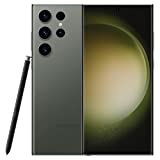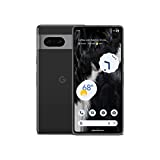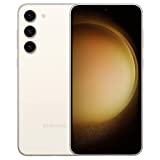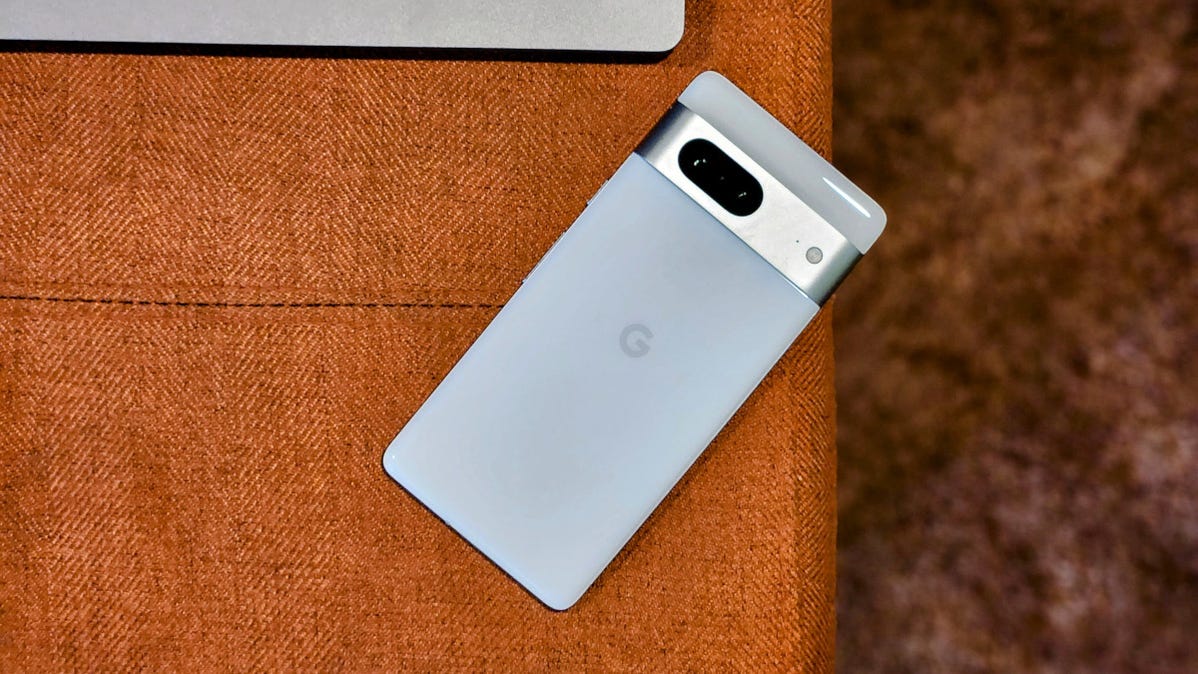
What to Look For in an Android Camera Phone in 2023
If you’re looking for an Android smartphone with a great camera, there are a lot of factors to consider when making the purchase. Many companies try to distract customers with gimmicky features and specs that look good on paper, but they don’t tell the full story.
Take megapixels, for example. While they can increase the resolution of your photos, unless features like post-processing and color reproduction are good, you’ll wonder what went wrong with the unimpressive image or video you just captured.
Companies like Google have taken the software route with their cameras. The search giant’s smartphone line relies on advanced algorithms to produce flagship-quality photographs, and Pixel phones are well-known for their high-quality pictures.
On the other hand, the actual camera hardware is also important. You can have the best smartphone camera software on the market, but if the sensor isn’t capable enough, you’ll hit the ceiling in terms of versatility and quality sooner than you might expect.
With so many different ways to implement a smartphone camera, it’s our job to break them all down and highlight the best ones. Below, we’ve listed a handful of phones that excel in their respective categories and offer the best balance of hardware and software.
Best Android Camera Phone Overall: Google Pixel 7 Pro
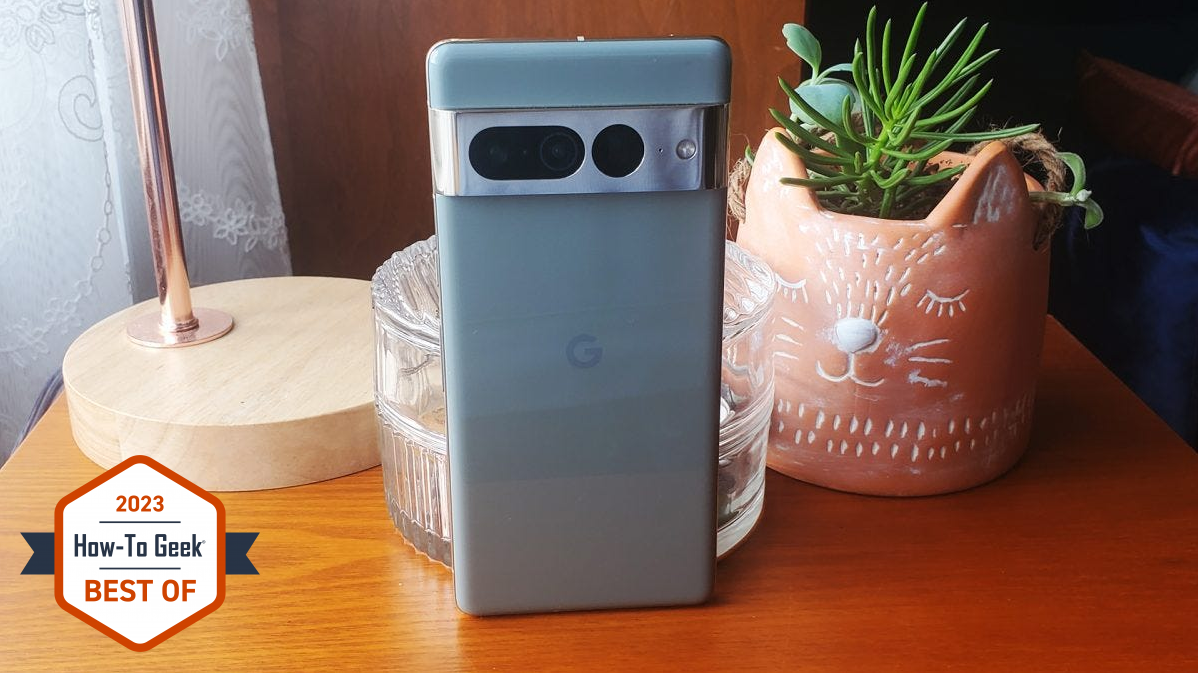
Pros
- ✓ The camera is mind-blowingly good
- ✓ The display is spacious and vibrant
- ✓ Great speakers, calls, and connections
- ✓ Android 13 and the Pixel UI do the job right
Cons
- ✗ Battery life is so-so
- ✗ The occasional pause in speed
- ✗ Awkward placement of volume button
Google Pixel phones have been at the top of “Best Camera Phone” lists since the beginning. While the gap has closed in recent years, the Pixel 7 Pro is still the Android phone that stands above the rest of the competition.
Before we dive into cameras, the Pixel 7 Pro is also one of the best Android phones overall. It has a big 6.7-inch display with 1440 x 3120 resolution and a 120Hz refresh rate. This is certainly a large phone, but that big size comes with some benefits.
For starters, you get a big 5,000mAh battery, which provides much better battery life than the smaller Pixel 7. It also has Google’s Tensor processor and 12GB of storage. Extra goodies include wireless charging and water resistance.
Another benefit over the smaller Pixel 7 is an extra camera. The main camera is 50MP, it’s joined by a 12MP ultra-wide camera and a 48MP telephoto camera with 5x optical zoom. These cameras make sure you are equipped for any photo situation you should come across.
The Pixel 7 Pro costs $900, and it comes with 3 years of Android updates. You’ll always get those updates first, and the software is the cleanest version of Android you can find.
Best Camera Phone
Google Pixel 7 Pro
☆☆☆☆☆ Link Icon Read How-To Geek’s Full Review
Not only a great Android experience overall, the Pixel 7 Pro has three amazing cameras and excellent camera software to make your photos look great.
Best Budget Android Camera Phone: Google Pixel 6a
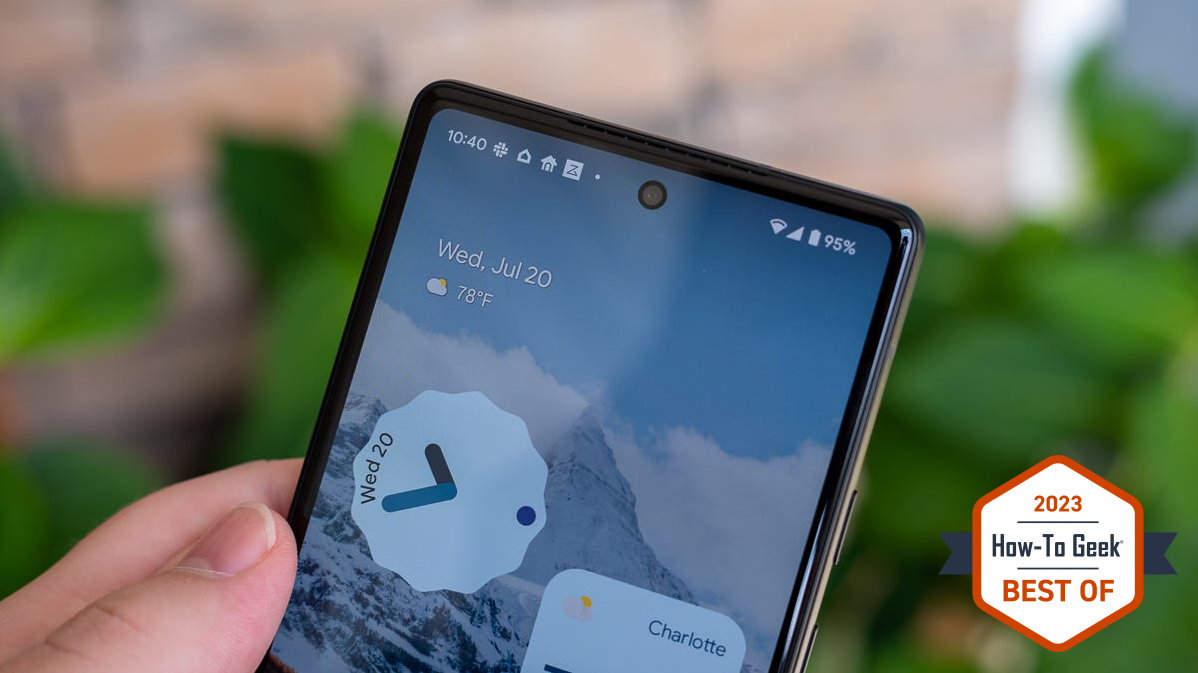
Pros
- ✓ Shares two cameras with the Pixel 6a
- ✓ Great Google camera software
- ✓ Only $450
Cons
- ✗ Battery life could be better
- ✗ 12MP main camera is getting a bit outdated
- ✗ Only IP67 water resistance
What if you could get most of the same cameras as the Pixel 6 for $150 less? That’s exactly what you can get with the Pixel 6a.
The Pixel 6a has the same main 12.2MP camera that has been a winner for Google for several years. The 8MP front-facing camera is the same as the one on the Pixel 6a along with a secondary ultra-wide camera on the back.
So what’s responsible for the cheaper price? The Pixel 6a doesn’t have the same main 50MP camera as the standard Pixel 6. Instead, you get the 12MP camera from older Pixel models, which is getting outdated. But, you’ll also get access to Google’s fantastic photography software, which will make your photos look great
Regarding other cuts, the 6.1-inch display also has a refresh rate of 60Hz versus the Pixel 6a’s 90Hz. The 6a has 6GB of RAM, whereas the 6 has 8GB. However, they both have Google’s Tensor chip, so for most people, the 6a will work great.
All in all, it’s a pretty sweet deal if the Pixel 6 is pricey for you. You miss out on little things like wireless charging, but camera performance will be spot on.
Google Pixel 6a
☆☆☆☆☆ Link Icon Read How-To Geek’s Full Review
The Google Pixel 6a is an incredible value at just $450. It packs the flagship Tensor processor, Google’s advanced camera technology, and AI features like Live Translate.
Best Premium Android Camera Phone: Samsung Galaxy S23 Ultra
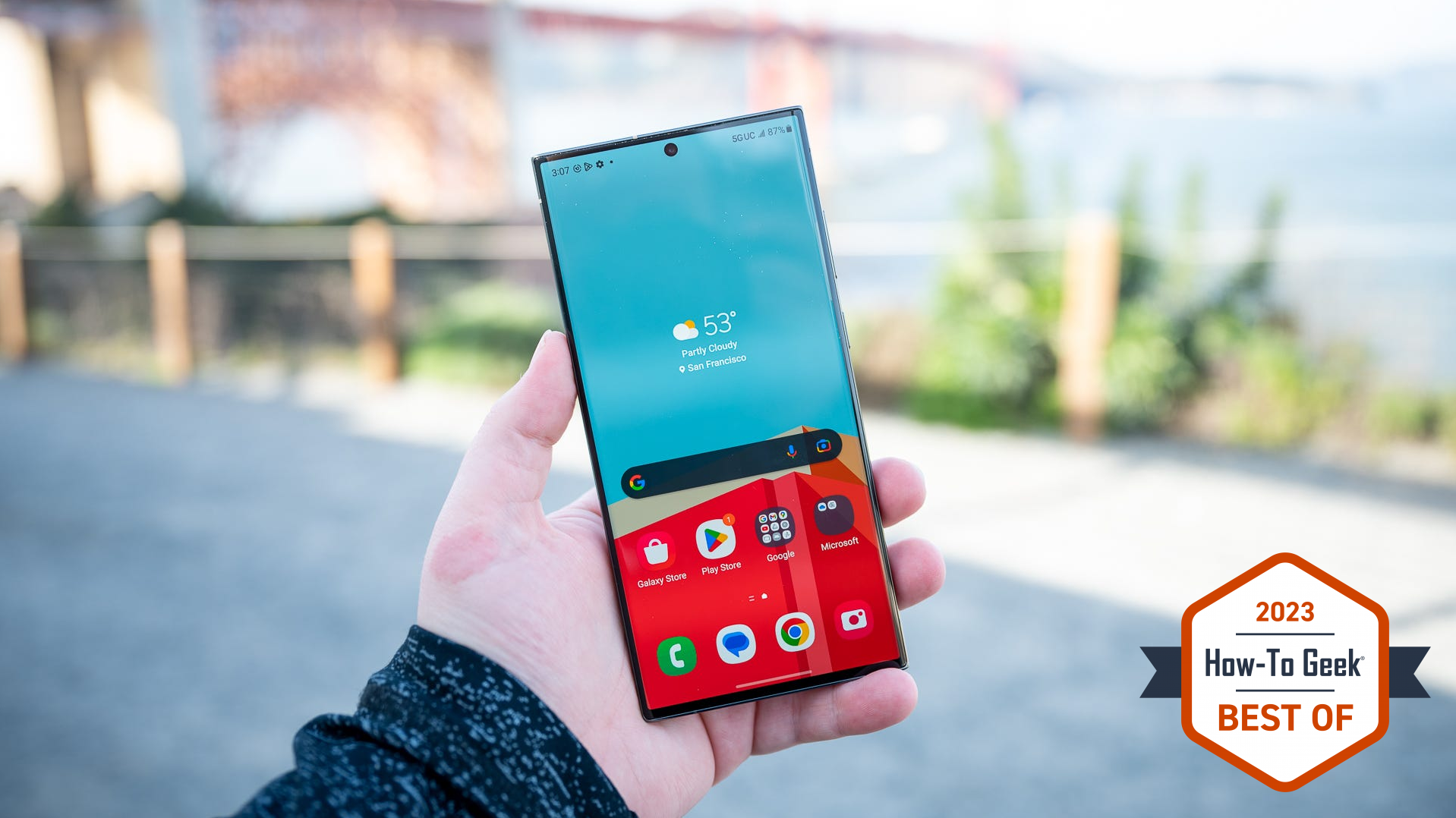
Pros
- ✓ Upgraded 200MP main camera
- ✓ Five total cameras
- ✓ Two zoom lenses
- ✓ Beastly specs
Cons
- ✗ Downgraded 12MP front camera
- ✗ Samsung’s camera software isn’t great
- ✗ Expensive
If you want a phone with everything you could possibly want from cameras, look no further than the Samsung Galaxy S23 Ultra. Like the previous Ultra model, it has five total cameras—four of them on the back—including a 200MP main camera.
Joining that massive 200MP main camera is a 12MP ultrawide, 10MP 3x telephoto, and 10MP 10x telephoto. There is one camera downgrade, though. The S23 Ultra’s front camera has been bumped down to 12MP from 40MP. Despite the downgrade in megapixels, Samsung claims selfies look better than ever thanks to software improvements.
There are two telephoto lenses, so you don’t lose quality when zooming in. You can zoom in 3x or 10x without using digital zoom, essentially just cropping a photo. New this year is the ability to combine 16 pixels into one larger pixel, which results in brighter and more detailed photos in challenging lighting conditions.
Beyond cameras, the S23 Ultra is a beast of a phone in every facet. It has a massive 6.8-inch display with 120Hz refresh rate, Snapdragon 8 Gen 2 processor, up to 12GB of RAM, up to 1TB of storage, and a 5,000mAh battery. All of these high-end features will cost you around $1,200 or more. It’s not cheap, but this is as premium as you’ll get.
Best Premium Android Camera Phone
Samsung Galaxy S23 Ultra
☆☆☆☆☆ Link Icon Read Review Geek’s Full Review
If you want great cameras, great performance, and money is no object, the S23 Ultra is the phone for you. This high-end flagship has five powerful cameras to take the best shots.
Best Android Camera Phone in Low Light: Google Pixel 7

Pros
- ✓ The camera is mind-blowingly good
- ✓ The display is spacious and vibrant
- ✓ Great speakers, calls, and connections
- ✓ Android 13 and the Pixel UI do the job right
Cons
- ✗ Battery life is so-so
- ✗ The occasional pause in speed
- ✗ Awkward placement of volume button
When picking a phone that performs best at night, we have to give it to the latest Pixel phone. We’ve already highlighted the Pixel 7 Pro, so we’ll talk about its smaller sibling, the Pixel 7.
Google’s Night Sight feature on the Pixel line continues to be the best in the business. You can capture some truly breathtaking images at night of anything you’d like. The system relies on a long exposure and lots of post-processing magic to spit out shots you’d never expect from a smartphone.
The company also has a feature coupled with Night Sight called Astrophotography. This feature specifically looks for a starry sky to highlight the miniature lights above and create photos that leave you speechless. Other phones aren’t capable of this kind of photography, since they lack this software feature.
The Pixel 7 doesn’t have as many cameras as the bigger Pixel 7 Pro, but it still has the 50MP main camera and a 12MP ultra-wide camera—you only miss out on the telephoto lens. Plus, it’s a whopping $300 cheaper than the Pro at $600, so it’s a fair trade-off.
At the end of the day, Google’s Night Sight and Astrophotography are why the Pixel 7 should be the phone you think of if you’ll be taking lots of photos at nighttime. It’s simply that good.
Best Camera Phone
Google Pixel 7
☆☆☆☆☆ Link Icon Read How-To Geek’s Full Review
The Pixel 7 has three amazing cameras and excellent camera software to make your photos look great.
Best Android Camera Phone for Selfies: Samsung Galaxy S23
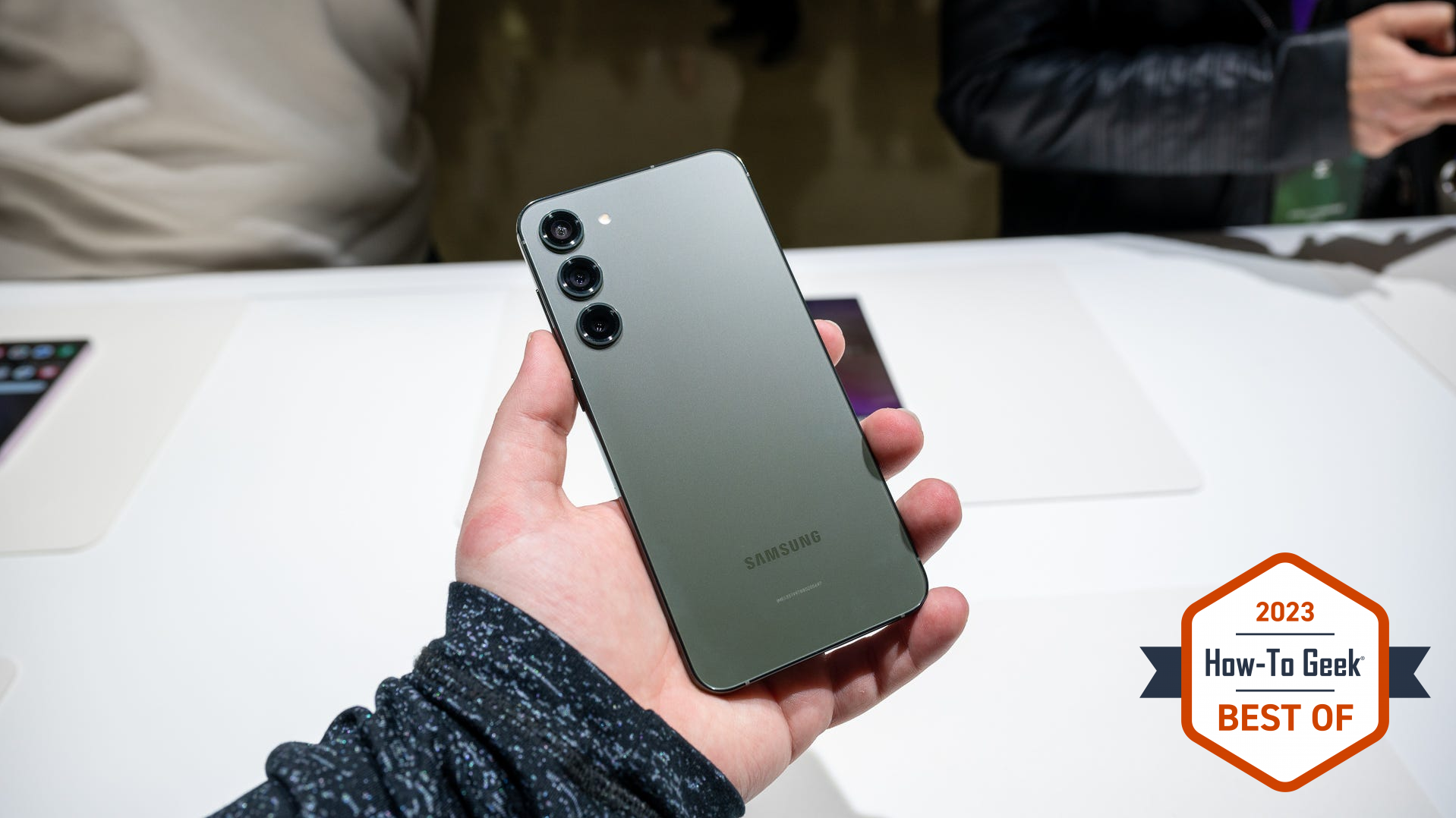
Pros
- ✓ Excellent Portrait Mode software
- ✓ Great size
- ✓ Same performance as the Ultra
- ✓ Four total cameras
Cons
- ✗ Misses some high-end features from the Ultra
Selfies can sometimes be more about software than megapixels. Google is typically the king of camera software, but Samsung has the edge in this department. We already highlighted the Galaxy S23 Ultra, so let’s look at the smaller Samsung Galaxy S23.
What makes Samsung better than Google at selfies? It’s all about Portrait Mode. Samsung really nails the Portrait Mode feature. It’s incredibly good at knowing which parts of the photo should be blurred and which shouldn’t, even down to strands of hair. On top of that, Samsung upgraded the front camera from 10MP to 12MP.
Beyond cameras, the Galaxy S23 has a nice 6.1-inch AMOLED display with a 120Hz refresh rate, a Snapdragon 8 Gen 2 processor, 8GB of RAM, up to 256GB of storage, and a 3,900mAh battery.
Regarding rear cameras, you’re getting a 50MP main camera, 10MP 3x telephoto, and 12MP ultrawide on the back of the device. It’s a very comparable camera setup to the Galaxy S23 Ultra, but it’s missing one extra zoom lens. Still, having a telephoto and ultrawide lens opens up a lot of photo possibilities.
Best Android Selfie Phone
Samsung Galaxy S23
Samsung’s latest flagship phone strikes a nice balance between price and function. The Portrait Mode software is perfect for selfies. You’ll also get a beautiful display, fantastic cameras, and top-notch Samsung support.
Best Android Video Phone: Sony Xperia 1 IV
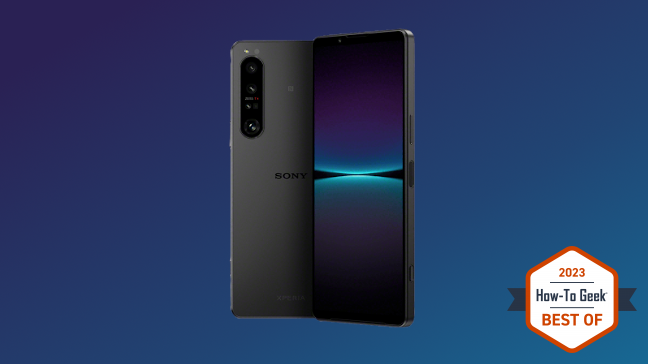
Pros
- ✓ Extensive video controls with Cinema Pro app
- ✓ Granular audio controls
- ✓ High-end specs w/ a 4K screen
Cons
- ✗ Not great for average videographers
- ✗ Expensive
The Sony Xperia 1 IV is a phone that’s firmly in the “not for most people” category, but it’s perfect for videophiles. It’s one of the most premium phones you can get with a list of impressive specs like a 6.5-inch 4K OLED screen, Snapdragon 8 Gen 1, 12GB of RAM, and loud stereo speakers. However, it’s the camera department that makes this phone incredible for video.
The Xperia 1 IV features a slew of professional controls that let you adjust virtually every aspect of the video you want to capture. From ISO to white balance to color grading, you’ll find all the controls a pro could ever want to create the memories and achieve the production level you want. You also get Sony’s Cinema Pro camera app for even deeper control over your video and advanced audio controls to perfectly nail the sound capture.
On top of all this, the Xperia 1 IV comes with a standard 12MP f/1.7 lens, an ultra-wide 12MP f/2.2 lens, and a periscope-style 12MP f/2.3 telephoto. This hardware, combined with Sony’s innovative camera controls, means you can create some stunning videos. You can capture everything up to 4K at 120 frames per second in HDR and in a cinematic 21:9 aspect ratio.
One thing to remember about the Xperia 1 IV is it’s not exactly consumer-friendly. There are many controls and features here that will appeal to a more experienced user, but not those who want to point and shoot. Don’t expect the auto-mode for videos to impress you or a simple snap of the shutter button to capture your next masterpiece without any editing.
Priced at $1,399, the Xperia 1 IV is by no means cheap, but if you’re serious about capturing video with your phone, Sony’s latest offering is certainly worth consideration.
Best for Video
Sony Xperia 1 IV
Sony’s flagship phone has the hardware and software to make some truly breathtaking video. However, it’s not intended for casual users, and it’s very expensive.



